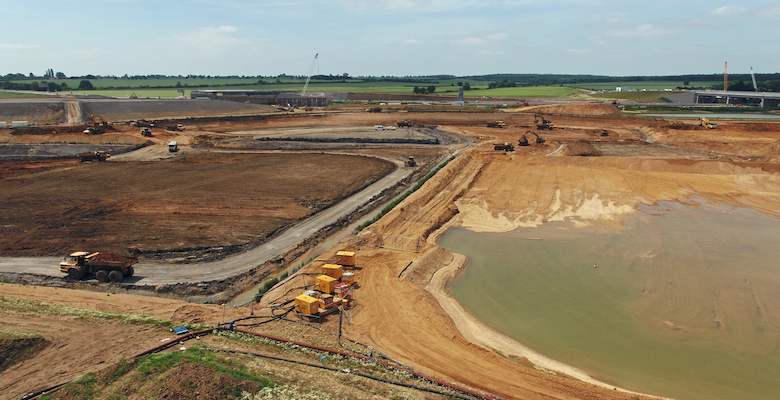5th November 2021
They say the customer is always right – and at Selwood we are proud of the exceptional service we deliver, time after time. However, that does sometimes mean we have to respectfully challenge what we’re being asked to do, because the most obvious way isn’t always the right one!
A good example is a request we commonly receive, along the lines of: “Can I rent a six-inch pump?”. If we ask why that size of model has been chosen, the answer will often come back: “It’s what we always use,” or “It did the job last time”.
That may be true – but at Selwood it’s our mission not just to get the job done, but to do it in the most cost-effective, fuel-efficient and sustainable way possible. Often, that might mean not giving you exactly what you’ve asked for.
Here’s why.
Every pumping job is different – and so are the pumps you need
If you’re digging a hole, the decisions you need to make can be straightforward. For example, if you need to create a trench two metres deep and 500 metres long, the chances are that a five-tonne digger will do the job for you every time.
However, if you want to pump groundwater out of that trench, it’s not so simple. There are a number of variations and anomalies that make every situation unique. That six-inch pump you hired last time might do the job – but there might be a better way.
At Selwood, we’ll always go through a thorough questioning process and often undertake a site visit to take the customer through those variations and decide what factors are going to come into play.
These may include:
- The amount of water you need to move. A 500-metre long trench at one site might be taking in a lot more water than the one you dug at a different location previously.
- The type of liquid you’re dealing with. Are you shifting sewage, groundwater, polluted water? That tells us a lot about the kind of pump we might need, and what else we may need to put in place – for example, settlement tanks to collect suspended solids.
- The achievable flow rate. Put simply, this is the number of litres per second that we need to move. This can vary greatly from job to job – and so can the pump you need to achieve it.
- The distance you need to pump. That includes the suction depth – how far beneath ground level we’re going, and how far away the discharge point is. That six-inch pump may have worked fine last time, when your discharge was 50 metres away. This time, if it’s 200 metres away, it might not be the same story.
- The terrain and the gradient. Again, it’s a case of choosing the right solution for the job in hand. Your needs are going to be different when you’re pumping over a flat stretch of land to when you need to pump 100 metres up a steep hill.
- The most efficient solution. Efficiency is a triple win – we perform the job exceptionally , save fuel costs for the customer and reduce greenhouse gas emissions. Sometimes you can solve a problem in several ways – but there will always be a most efficient option. For instance, having installed a four-inch pump, we might choose to increase the discharge pipework from four inches to six to reduce the head and velocity of the water we’re discharging to be more environmentally friendly.
There are other factors that we will consider on a site visit. For example, is there an available electricity source enabling us to use electric-driven pumps that are more environmentally-friendly than their diesel equivalent? If not, could we use HVO fuel as a cleaner burning diesel alternative? (In most cases, we can!).
We also consider whether there is a need for extra environmental protection such as drip trays and spill kits just in case. Technology such as remote telemetry and auto stop and start features can also increase fuel efficiency.
Our teams will often talk about the BEP of a pumping setup – this is the Best Efficiency Point. If an installation falls short of the BEP then it could cause damage to the pump. This can potentially cause breakdowns, leading to downtime and potential delays to the project as well as the additional cost of repairs to the unit.
Our industry is always evolving, with new technology and new, more efficient engines coming onto the market all the time – constantly shifting the parameters of possibility. All of this means that what was the best or good enough last time might not be right today.
So, what happens when a customer asks for a six-inch pump – or anything else? We check carefully, interrogate intelligently and make sure we always arrive at the perfect solution.
That might be a smaller, more fuel efficient pump or it might be a large one with increased rental cost but better productivity and less risk of downtime.
We don’t know until we ask!

